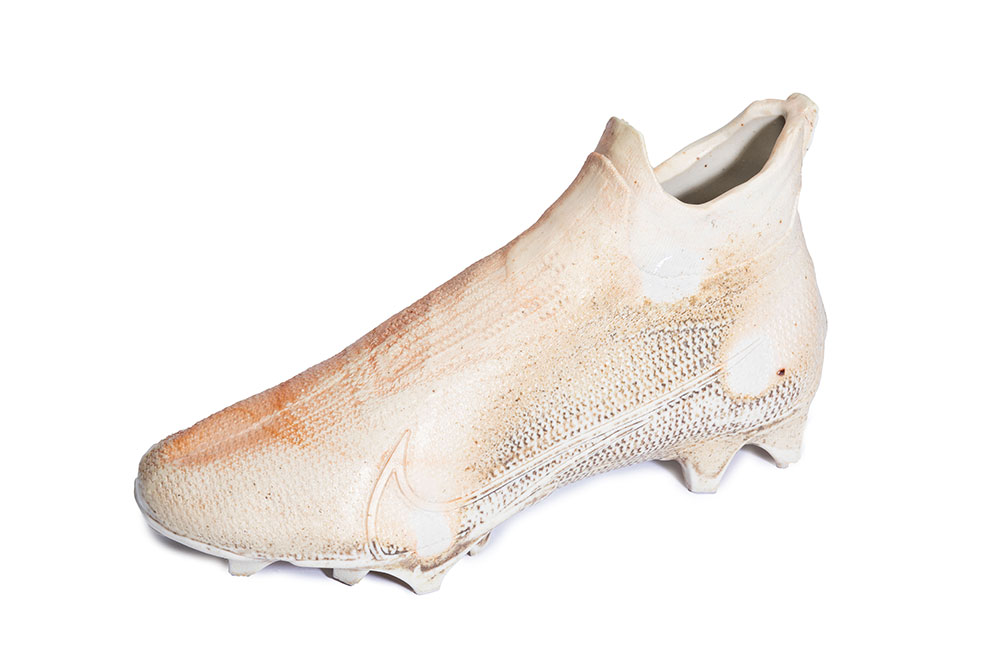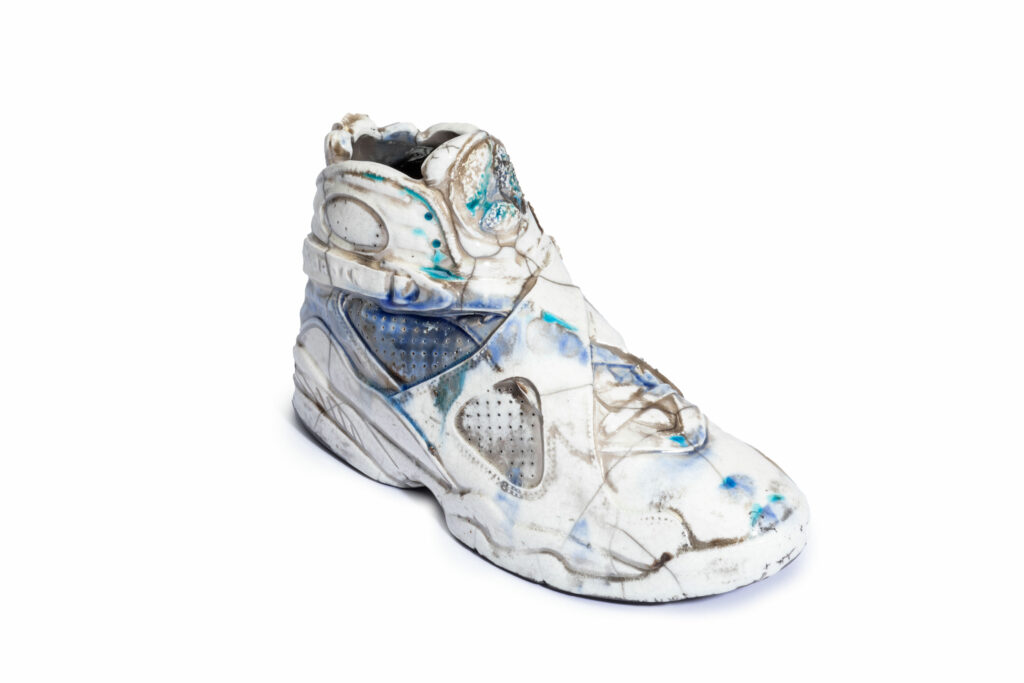London James ’13, founder of Porcelain Sneakerhead, an L.A.-based ceramics studio specializing in sneakers, traces her early roots to Chicago, a center of America’s sneaker culture. The iconic Air Jordans were launched there on the fame of the Chicago Bulls’ Michael Jordan, and James caught the sneaker bug at an early age.
“When I was 3 years old,” she recalls, “my mom put me in tennis classes. The shoes were a highlight of my day.” She also remembers playing endlessly with homemade dough, shaping and reshaping things.

After James and her mother moved to Inglewood, she enrolled at LMU. In a ceramics course taught by Rudy Fleck, professor in the LMU College of Communication and Fine Arts, she fell in love with the art. Two years after graduation, James bought a potter’s wheel.
“I had a wheel before I had a couch,” she recalls.

In 2017, James launched Porcelain Sneakerhead. She uses plaster to make molds and usually needs about 10-12 weeks to complete a sneaker, and she can work on as many as six to nine at a time. “I feel like I’m being myself in the studio,” she says.
James also teaches ceramics to young people in Watts. “I consider it my mission, to bring ceramics to communities like mine.” Her studio also was highlighted at Nike’s SNKR BALL 2019, an annual event that pays tribute to Black empowerment and social change. In 2021, she was named an Icon of Los Angeles by Nike.

James says her buyers span the gamut of race, ethnicity and geography. But she sees her work as artistic expression arising from the Black community.
“At the end of the day, there are a lot of things about our culture that people want,” James says. “But we’re often uncredited.”
